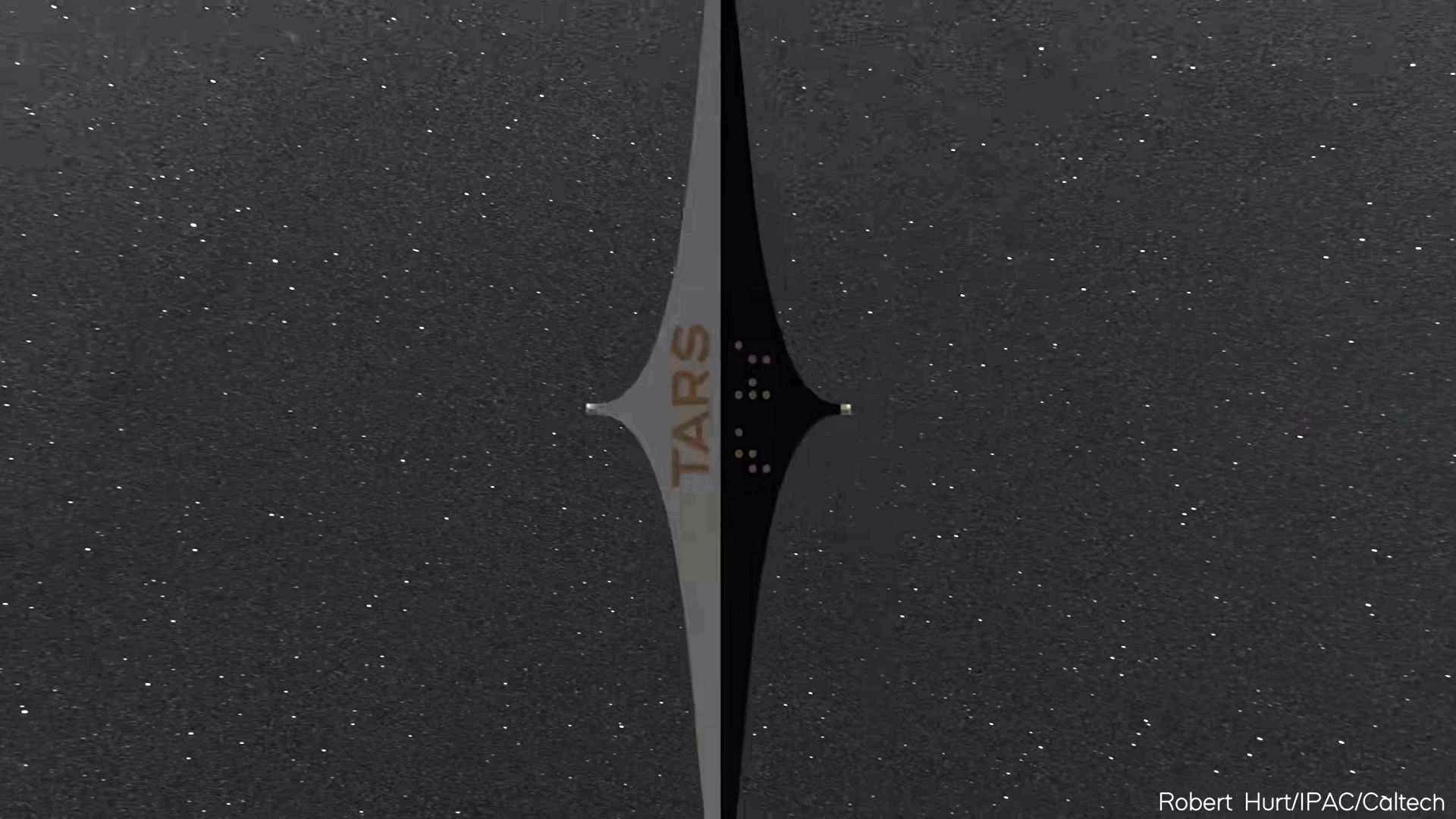New Delhi: Astronomer David Kipping and Engineer Kate Lampo have proposed a new concept for launching small spacecraft over interstellar distances. Lightsails are thin, reflective surfaces that accelerate spacecraft using energy from the Sun. The problem with these spacecraft is that the energy received decreases with distance, with scientists considering arrays of high-power lasers to boost the lightsails. The proposed concept uses a pair of paddles, each with contrasting silver and black sides, connected by a paddle. The radiation pressure on the silver sides is more than the pressure on the dark sides, causing the structure to rotate, rapidly.
Over years, such a structure would act as a battery, continuously converting solar energy into centrifugal force, spinning up rapidly. Just before the centrifugal force causes the spacecraft to disintegrate, small microchip-sized probes can be released, that can escape the gravity of the Sun. Now the whole structure would be pushed away from the Sun because of the radiation pressure. To tackle this, the spinner is deployed in what is called a quasite orbit, with sufficient velocity to remain in orbit around the Sun. This is a modification of the statite orbit, where the radiation pressure on a solar sail is just enough to balance out the influence of the gravity of the Sun. This quasite orbit was also proposed by Kipping six years ago.
Mission Profile
The proposed spacecraft is named Torqued Accelerator using Radiation from the Sun (TARS), which is inspired from the versatile robot in Interstellar. The structure would need to be fairly large, but thin, the way solar sails are, measuring 63m x 7m x 2.6um, and can be stowed away in the payload fairing of a launch vehicle. The structure would then unfurl or deploy in space, spinning up to speeds of 12.1 km/s over about three years, and deploying a payload at 40.4 km/s, exceeding the escape velocity of the Sun.
Protecting Mars
There are uses of the spacecraft beyond interstellar travel. One of the problems with establishing a sustained human presence on Mars is the increased exposure to solar radiation, because of a lack of a thick, protective atmosphere. The radiation from the Sun constantly strips away the tenuous atmosphere of the Sun. Scientists have previously proposed sunshades to protect the Martian atmosphere. Electrically charging the opposite ends of TARS can create a magnetic field, that can offer protection from the Sun, just like the magnetosphere of the Earth. TARS is easy and cheap to manufacture, so entire clusters of the rotating lightsails can be deployed in geostationary orbit around Mars, to say protect a base on the surface. A pre-print version of the paper is available on Arxiv.
